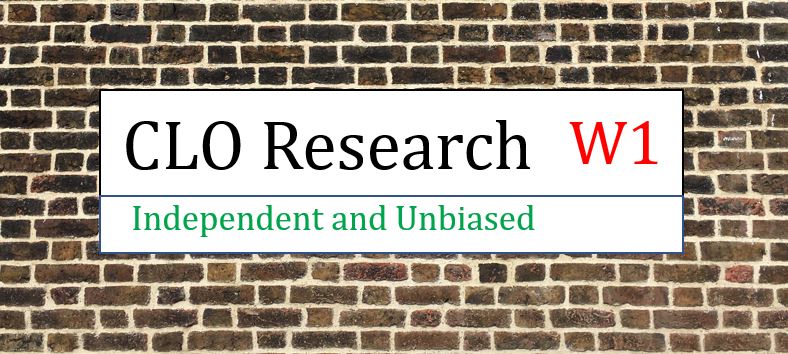Musings: AAAs Remain Wide; New Issue and Reset Highlights
AAA spreads in both the US and EU CLO markets remain wide relative to their year-to-date averages.
CLO Research provides independent research and insights on CLOs, offering investors and managers fresh, unbiased perspectives to support their decision-making.
If you’re an *investor*, we invite you to register with us using your business email address to gain complimentary access to our freemium content.
If you’re interested in learning more about the premium content or would like a walkthrough of the website via Zoom, please don’t hesitate to email info@clopremium.co.uk.
AAA spreads in both the US and EU CLO markets remain wide relative to their year-to-date averages.
Both primary US BSL and EU CLO AAA tranches are currently pricing wide relative to year-to-date averages, which negatively affects new issue equity arbitrage. That said, the market is likely to self-correct over time, and as long as loan market conditions remain strong, there is no reason AAA spreads should not tighten further.
Selected takeaways from yesterday’s CLO panel discussions:
How do emerging CLO managers compare with their peers?
Please refer to the table below for a comprehensive list of CLO managers and their global CLO collateral AUM (in USD billions), rather than CLO liabilities, broken down by US BSL, US MM, and EU CLOs, as of 31 March 2025. Total global CLO collateral AUM stood at approximately USD 1.4 trillion as of 31 March 2025.
The table below lists the top 100 US CLO managers, along with their BSL and MM CLO assets under management (rather than CLO liabilities) as of 31 March 2025. The final two columns show the average annual growth in total and BSL CLO AUM (in billions). Notably, 33 managers have grown their BSL CLO AUM by more than $1 billion per year since pricing their first deal.
Please see the table below for the full list of 71 EU CLO managers and the trends in their EU CLO collateral assets under management (as opposed to CLO liabilities) since 31 December 2017. Several emerging managers have successfully expanded their EU CLO AUM to over €1 billion since pricing their first deal in 2023. As at 31 March 2025, notable examples include Arini Capital Management with over €2 billion in AUM, Sona Asset Management with €1.8 billion, Signal Capital with €1.7 billion, Canyon Capital with €1.4 billion, M&G Investment Management with €1.2 billion, and AllianceBernstein with €1.3 billion.
The table below lists the top 100 US BSL CLO managers, ranked by their US BSL CLO assets under management (as opposed to CLO liabilities) as at 31 March 2025.
The table below shows the list of US MM CLO managers, ranked by their US MM CLO assets under management (rather than CLO liabilities) as at 31 March 2025.
In contrast, there were no EU CLO deals with negative equity NAV as of 7 March, but by 14 April 2025, 22 deals—or 4.3% of the total sample—had moved into negative territory.
A more objective way to evaluate a manager’s capability is by examining the inception-to-date gross annualised collateral return of their deals, measured relative to the relevant loan indices and assessed on an unlevered basis. This provides a clearer measure of true alpha generation.
According to independent analysis by CLO Research, Generate Advisors has consistently delivered outperformance against the Morningstar LSTA U.S. B/BB Ratings Loan Index on an unlevered basis in recent years. Here’s a set of interview questions from CLO Research, accompanied by responses from Rizwan Akhter, Head of Generate Advisors.
Given the significantly smaller base of US MM CLO AUM, it is unsurprising that annual growth has continued to remain in double figures. In contrast, US BSL CLO AUM recorded growth rates of just 3.3% and 4.3% in 2024 and 2023, respectively, both of which were lower than the 9.2% growth rate recorded in 2020.
Please see the graph below that illustrates the trend line for 2.0 US CLO AUM since 2012. The year-end notional AUM for each period is determined based on the pricing dates of CLO deals and the notional of the underlying collateral. The year 2021 witnessed the largest increase in US CLO AUM, followed by 2014.
